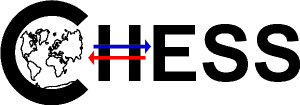When: 17-22 September 2023
Where: Lyngen Alps, Northern Norway
Credits: 4 ECTS
No. of spots: 10
Lecturers: Benjamin Robson (UiB), Pål Ringkjøb Nielsen (UiB), Jostein Bakke (UiB), Jan Magne Cederstrom (UiB), Kristian Vasskog (UiB), Olena Dubovyk (UiB),
Target Group: PhD students with a background in cryospheric sciences, but also students working with topics within the Earth Sciences with an interest in learning more about remote sensing and geomatics.
Course responsible: Benjamin Robson
Application Deadline: 18th May 2023 at 14.00 Norwegian time
Course description
This 6-day course will introduce PhD students to various methods relevant for studying contemporary and paleo glaciological environments and processes. We will focus on integrating close-range remote sensing techniques (Unmanned Aerial Vehicles; UAVs, tablet-based GIS geomorphological mapping) with Earth Observation Data (satellite data, aerial photography, interferometry datasets), shallow seismic approaches (such as ground penetrating radar and CHIRP) along with analysis of geological archives such as lake sediments including both bathymetric surveys and sediment coring. The course will equip students with sufficient skills to collect high-quality data in the field to study how glacial landforms and landscapes have changed over a range of timescales.
This course will be held in tandem with the UiB course GEOV226: Field and Laboratory Course in Quarternary Geology, with the PhD students actively working with the master-level students from UiB. Ten spots are available for the course, which will be assigned to a mixture of PhD students that are part of the Norwegian CHESS (Research school on changing climates in the coupled earth system) school and international PhD students. Priority will be given to students that can demonstrate that the scope of the course is related to their PhD projects.
Students will rank their preferences in methods when applying for the course. They will primarily work with their assigned methods, but if time allows, there may be the opportunity also to be introduced to additional methods.
Registration
Registration for the course is here. Note that applicants from a non-Norwegian university need to attach a letter of support from a supervisor to be considered.
Learning outcomes
After completing the course, a student would be:
- Familiar with different close-range remote sensing techniques and understand the strengths, and weaknesses of each method, and how best they can be utilised.
- Able to perform catchment-scale processing of aerial photography, along with optical and radar satellite imagery in order to quantify rates of glacial and periglacial change, for example, glacial down wasting or rock glacier creep.
- Competent in integrating earth observation datasets with field observations to perform geomorphological mapping using tablet-based GIS.
- Be familiar with shallow seismic investigations and be able to design a field study.
- Combine different techniques for mapping geomorphological processes and critically evaluate different types of lakes as an archive for past process environments.
- Be familiar with how lake sediment cores can be extracted and understand the theory of what such records can tell about paleoclimatic variations.
Location and course structure
The summer school will be held in two locations in the Lyngen Alps in Northern Norway. The first two nights and two days at Aurora Fjord Cabins in Eastern Lyngen, they will spend one day in the field and one day processing data. We will then meet with the UiB students in Nordlenangen in Western Lyngen. During this second part of the course, the PhD students will help the instructors guide the UiB students to plan their fieldwork.
The field methods that will be taught are:
- UAV surveying and change detection
- Geomorphological mapping
- Ground Penetrating Radar
- Lake sediment coring
- Chirp/bathymetry
Approximate timetable of the course
| Day | Date | Day of week | Activity |
| 0 | 17/9 | Sunday | Arrival in Tromsø. Drive to Lyngen. |
| 1 | 18/9 | Monday | In the field working in their groups. |
| 2 | 19/9 | Tuesday | Data processing and analysis |
| 2 | 19/9 | Tuesday | Arrival in the evening and dinner. PhD students will present the methods they have been working with. Fieldwork planning in groups. |
| 3 | 20/9 | Wednesday | In the field |
| 4 | 21/9 | Thursday | In the field |
| 5 | 22/9 | Friday | Either morning in the field, or data processing. Evening transfer to Tromsø. Fly down or stay in Tromsø until Saturday morning. |
All travel, accommodation and food costs will be covered. Accommodation will be in cabins. Students should arrive in Tromsø by midday on the 17th of September. We will take the evening ferry to Tromsø on the 22nd so students should plan on either a late flight from Tromsø or a morning flight on the 23rd.
Students at a Norwegian institution can apply for a travel advance. Students at a non-Norwegian institution will have their expenses reimbursed following the course.

